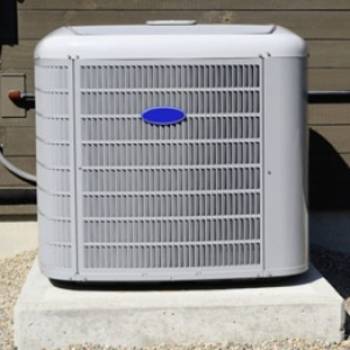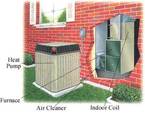Heat Pumps and How They Work

A heat pump is a system that transfers thermal energy from a source to a sink that is at a higher temperature than the source. Meaning, heat pumps move thermal energy in the opposite directs of the spontaneous heat flow. The heat pump uses some form of low entropy energy to accomplish the desired transfer of thermal energy from source to sink.
Heat pumps use a small amount of energy to move heat from one location to another. These devices are typically used to pull heat out of the air or ground to heat your home or office building. Heat pumps work in very similar ways as air conditioners.
One of the biggest advantages of a heat pump over your standard heating ventilating and air conditioning unit is that there is no need to install a separate system to heat or cool your home. Heat pumps also work efficiently, because they simply transfer heat, rather than burning fuel to create it. And with it all about being “green” nowadays, this makes it a little greener than gas-burning furnaces.
Heat pumps aren’t just for heating and cooling your home though. Heat pumps are also used in hot tubs as well as swimming pools. Heat pumps work best in moderate climates, so if you live in an area without extreme heat and cold, an air pump can really save you some money each month.
There are many types of air pumps available. One of the most common heat pumps available is the air-source heat pump. This pump takes the heat from the air outside of your home and then pumps it inside through refrigerant-filled coils, much like your refrigerator does. The air source variety is pretty basic, in which you’ll find two fans, the refrigerator coils, a reversing valve and a compressor inside to make it work.And then you have the air-air heat pump. This system takes heat from outdoor air and transfers it into indoor air ducts. With the right modifications, air-source systems can also work with other types of outdoor heating systems. The key to allowing air-air heat pump to also cool down is the reversing valve. This part reverses the flow of the refrigerant, which causes the system to begin operating in the opposite direction. Therefore, instead of pumping heat inside your home, the heat pump releases this heat, just like your air conditioner. Once the refrigerant is reversed, it absorbs heat on the indoor side of the unit and flows to the outside. It is here that the heat is released which allows the refrigerant to cool down again and flow back inside to pick up more heat. The process repeats over and over until the correct temperature is met.
